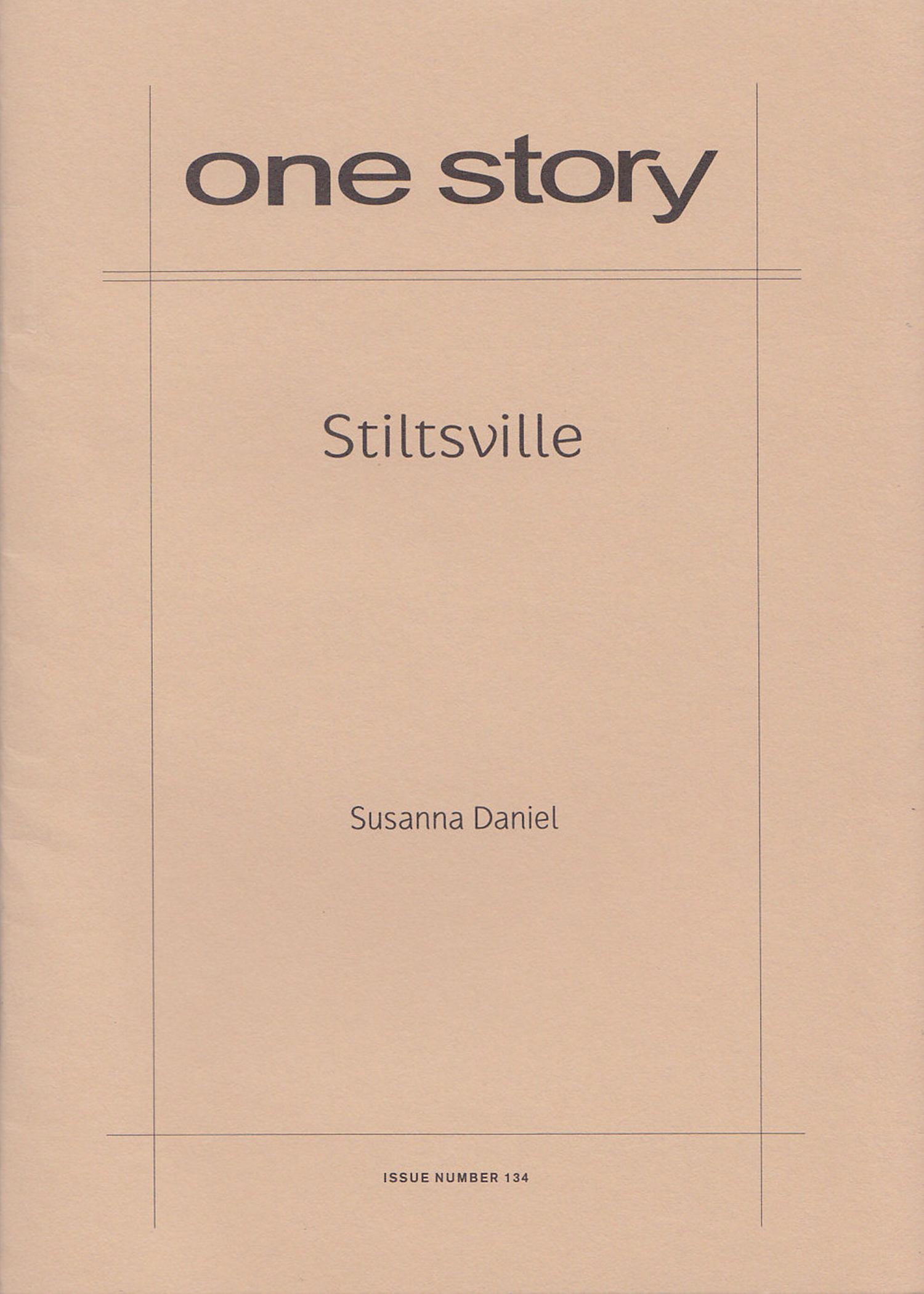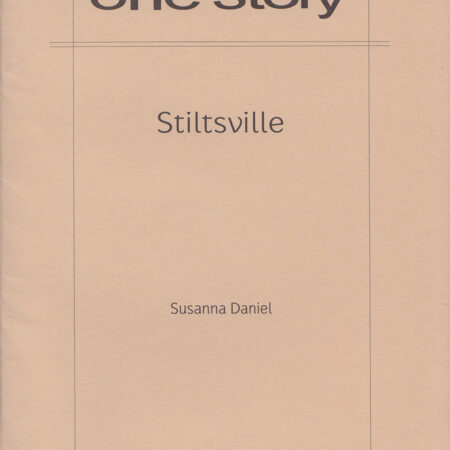
Stiltsville
$2.50
51 in stock
Excerpt
Dennis stood beside the swimming pool in bathing trunks and goggles, snapping on a pair of bright yellow kitchen gloves. It was August 25th, the morning after the hurricane, and we’d spent hours tramping through the debris that littered our property. Our neighbor Mr. Costakis’s royal palm stretched across our backyard, the deck sagged with split planks, and the swimming pool churned with foliage. Our street was impassable, crowded with shredded trees and a felled telephone pole, and the canal at the back of the house teemed with window shutters, patio furniture, palm fronds: little rafts escaping for the sea. Among the unsinkable, our boat listed against its battered pier, crowded but unharmed. We’d lengthened the mooring lines and padded the hull with fenders, imagining a storm that would lift the boat aboveground, then recede in a breath. Upstairs, our daughter Margo and her new husband, Stuart slept in her childhood bed. They were living with us that month, house-hunting in lieu of honeymooning.
Susanna Daniel
Susanna Daniel was a Carl Djerassi Fiction Fellow at the University of Wisconsin Institute for Creative Writing, and has an MFA from the University of Iowa Writers’ Workshop. Her stories have been published in Harcourt’s Best New American Voices Anthology, Epoch, and The Madison Review. “Stiltsville” is an excerpt from her novel, Stiltsville, forthcoming in August 2010 with Harper. Susanna lives with her husband and son in Madison, Wisconsin, where she is at work on a second novel. She was born and raised in Miami, Florida. Read more about Susanna Daniel and Stiltsville at www.susannadaniel.com.
Q&A by Hannah Tinti
- HT: Where did the idea for this story come from?
- SD: I think fiction mirrors life in that often we are focused on one thing – seemingly the most important thing – when in actuality something more essential, more life-changing, is happening, only we don’t yet realize it. We are ever-vigilant (at least I am) in our concerns, but we’re not always on-target. In this piece – which is the second-to-last chapter of my novel of the same name – the family is immediately preoccupied with Hurricane Andrew’s devastation and the daughter’s hasty marriage. They’re so caught up in this noise that they don’t realize what’s being drowned out. Frances and Dennis and Margo had been characters in my life and work for about a year when I first wrote this chapter. I knew that they would have to live through Hurricane Andrew because it happened in the time line of the novel – they’d already lived through difficult moments in the local history, like the Mariel boatlift and the cocaine cowboys and the McDuffie riots. If you live in Miami, regardless of what’s happening in your private life, public events intervene – like hurricanes or violence or riots or scandal. Miami is a place that brings its own plot to the table. This isn’t true everywhere.
- HT: What was the most challenging aspect of writing this story?
- SD: Probably the most difficult part of writing this story was saying goodbye to Stiltsville again.
- HT: What is the history of Stiltsville? When were the houses built, and where are they located?
- SD: Stiltsville is in the middle of Biscayne Bay, about five miles from downtown Miami and one mile south of Cape Florida, which is the very tip of Key Biscayne. The earliest Stiltsville shacks date back to the 1930s. There was even a social club called the Calvert Club out there in the late 1930s; a little later, there was an invitation-only men’s club called the Quarterdeck. The Quarterdeck was badly damaged in Hurricane Donna in 1960, then burned all the way down to the pilings in a fire in 1961.
At its peak in 1960, there were 27 buildings at Stiltsville. In the 1960s, fewer and fewer shacks remained, and the structures that were built to replace them looked more like real homes, with wraparound porches and bedrooms and working kitchens.
My own family’s stilt house, which we shared with three other families, was built by my grandfather in 1954. Before Hurricane Andrew hit in 1992, it stood among 14 total houses; after Andrew, seven remained. Without going into too much detail, I’ll add that the houses are no longer owned privately. (It’s very difficult to watch YouTube videos of fraternity brothers getting drunk on stilt house docks that used to be private homes – but then again, it’s only fair that the public gets to sample what it’s like to be there.)
As a writer, it’s my job to describe a setting as distinctly as possible, to make it real in the reader’s mind. I do a great deal of work describing Stiltsville in the first chapter of the novel. But honestly nothing works as well to show Stiltsville as a photo. The isolation of Stiltsville, the oddness of it – it’s really best shown in photograph.
There’s a Miami photographer named Brian Call who does a great job capturing the solitude of the stilt houses as they stand now. Another photographer named Jason Fulford did a spread on Stiltsville for LIFE magazine in 1998 – one of his photos is on my novel’s jacket.
You look at these photos, and you want to go there, immediately if not sooner.
Florida writer Les Standiford said, “No one who chances upon the phenomenon of Stiltsville for the first time will ever forget the sight of homes that hover above the waters, miles from any shore, like structures from a dream.”



- HT: What made you want to write about Hurricane Andrew?
- SD: I was born and raised in Miami, but I haven’t lived there for a very long time – I won’t say how long. But I recall the night of Hurricane Andrew very clearly, and I thought it would translate well to the written page. I still lived at home with my parents, though I wouldn’t for much longer. My grandfather was dying of leukemia at the time, and he was staying with us, and my whole family congregated in the living room, watching local meteorologist Brian Norcross – who made his name that night – on the portable TV, and a few yards away my grandfather slept through the whole thing. I remember my father standing at the sliding glass doors, and being worried that the glass would break – but I also remember the intensity of the storm, and how after several hours of this high-pitch intensity, it was difficult to even keep my eyes open. I remembering lying down on the rug in the hallway, between my grandfather’s room and the living room, and falling asleep. When I woke, the storm had passed and the entire city’s landscape was utterly changed. Hurricane Andrew was only one of dozens of storms that threatened to hit Miami while I lived there – but it was by far the most fierce during that time. The thing about hurricanes is that you always plan for them to hit – you buy bottled water and batteries, and tape up the windows, and gas up the cars – but most of the time they dissolve before causing much damage. Hurricane Andrew was the one, in my time, that made all the preparation worthwhile.
- HT: Frances and Dennis’s complicated and mature relationship ends up paralleling Margo and Stuart, the newlyweds. Did you start off with the intention of exploring marriage in this way?
- SD: Yes. I’m fascinated by marriage as a concept, in fiction and in life. It’s so full of contradictions – the mutability and stagnancy of it, its comfort and its strangeness, how safe and scary it can feel at the same time. Now, three decades later, Dennis and Frances have hit a certain stride, but they were once impulsive and, at least in their parents’ minds, irresponsible. Their marriage didn’t start strong; it grew that way, because of decisions they made, together and separately. For Frances to look at Margo and be disappointed in her choices is to have a bit of selective amnesia. But in the end, the two marriages do not mature in the same way.
- HT: Can you tell us what happens to Dennis?
- SD: No, I can’t. But I can say that I’m interested in the idea that sometimes we create change in our lives, and sometimes change comes uninvited – but it always comes. The final chapter of the novel takes Frances and her family in a direction they did not anticipate.
- HT: How does this story fit into your novel, Stiltsville? Where does it fall in the narrative?
- SD: This is an edited version of the second-to-last chapter of the novel, which begins on the day in 1969 when Dennis and Frances meet for the first time. Over the years, the couple faces the challenges not only of marriage – including temptation and disappointment and change – but also of the complicated, chaotic place where they’ve chosen to live. I’ve been told the novel reads as a love song to Miami, and in the end I think this is true. After this chapter, there are about 80 more pages before the novel ends.
- HT: How long did it take you to complete this story?
- SD: This question is like a math problem – X equals initial writing time, plus initial revision time, plus months of stewing, minus time spent stewing on other chapters, plus more revision, and so on. The simple answer is that the first draft, which I wrote many years ago, while I was getting my MFA, took about a month or so. But so much has changed in this part of the novel since then, and I’ve spent years forming the narrative as a whole, of which this chapter is an important piece.
- HT: What are you working on now?
- SD: I’m writing a novel about a sister and brother, again set in Miami in the 1990s. Both characters are married, and in the space of one year both marriages hit significant – but very different – hurdles, which they navigate together as well as individually. Again, I’m writing about marriage, but where STILTSVILLE is a primarily love story, the new novel – tentatively titled TOURING – is about compromise and loss as well as love. Like STILTSVILLE, a close-knit group of family members and friends functions as an emergency team during a crisis. Also like STILTSVILLE, parenting plays a big role in the new novel, though there’s a lot more focus on what parenting means in a larger sense, the role it plays in the community and in the arc of an individual’s life.
- HT: What is the best bit of advice about writing you have ever received?
- SD: My former teacher Frank Conroy told us to write every day. Simple, but smart. Writers are like addicts in that we are crafty. Every day, we can find some way to a) disappoint our goals for that day, and b) devise some new way to trick ourselves into reaching tomorrow’s goal (then, the next day, it’s back to disappointment). So I am trying to keep it simple: Write every day. As for novel writing specifically, I find myself often repeating E.L. Doctorow’s dictum: “Writing a novel is like driving a car at night. You can only see as far as your headlights, but you can make the whole trip that way.” For my part, I hope this is true.
